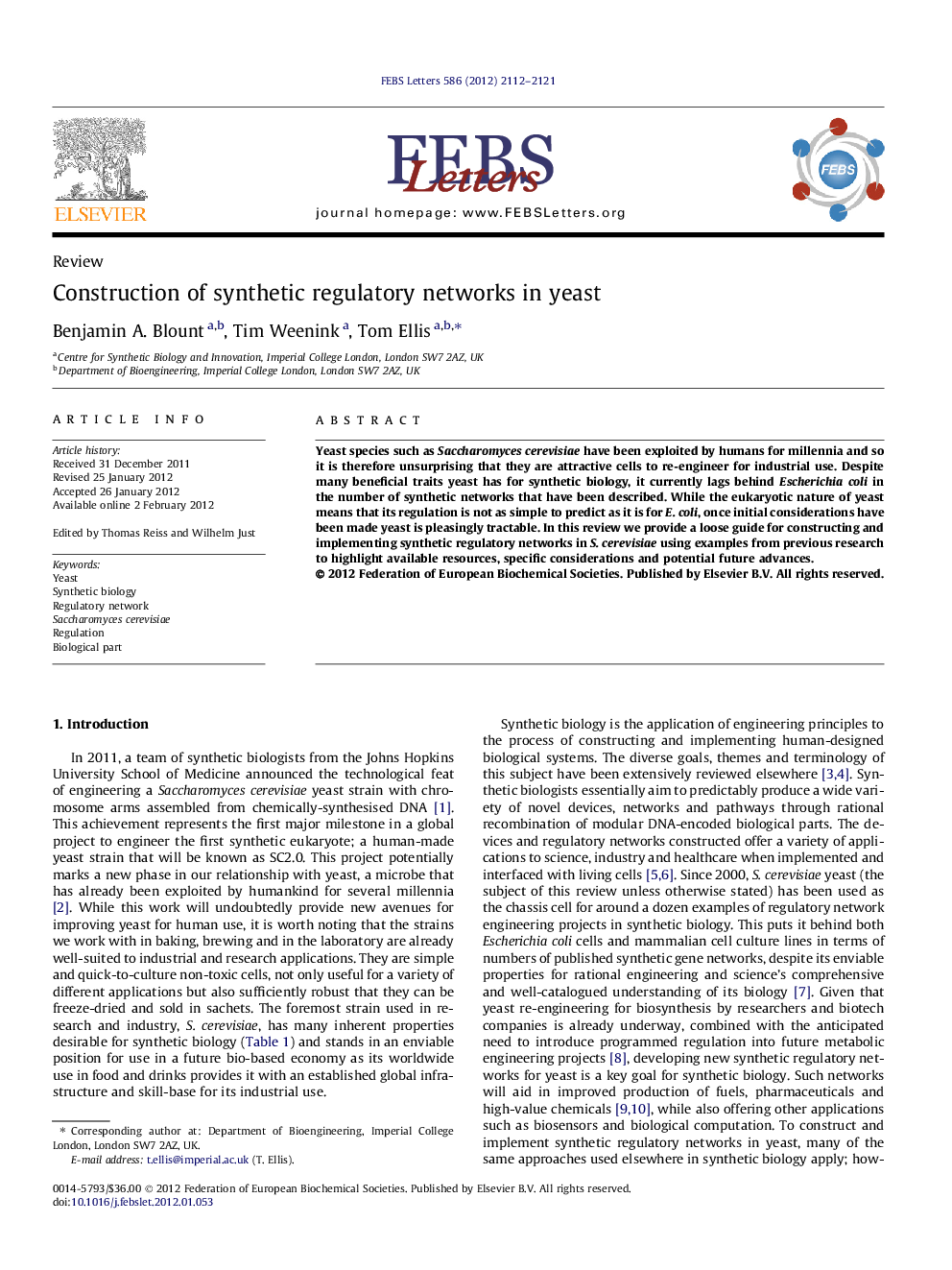| Article ID | Journal | Published Year | Pages | File Type |
|---|---|---|---|---|
| 10871622 | FEBS Letters | 2012 | 10 Pages |
Abstract
Yeast species such as Saccharomyces cerevisiae have been exploited by humans for millennia and so it is therefore unsurprising that they are attractive cells to re-engineer for industrial use. Despite many beneficial traits yeast has for synthetic biology, it currently lags behind Escherichia coli in the number of synthetic networks that have been described. While the eukaryotic nature of yeast means that its regulation is not as simple to predict as it is for E. coli, once initial considerations have been made yeast is pleasingly tractable. In this review we provide a loose guide for constructing and implementing synthetic regulatory networks in S. cerevisiae using examples from previous research to highlight available resources, specific considerations and potential future advances.
Related Topics
Life Sciences
Agricultural and Biological Sciences
Plant Science
Authors
Benjamin A. Blount, Tim Weenink, Tom Ellis,
